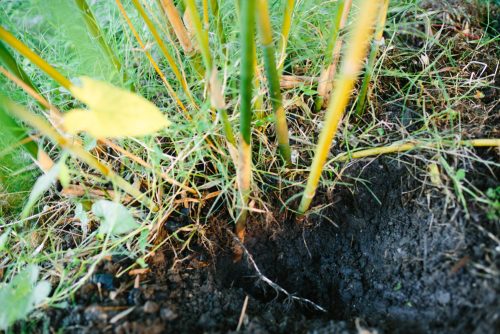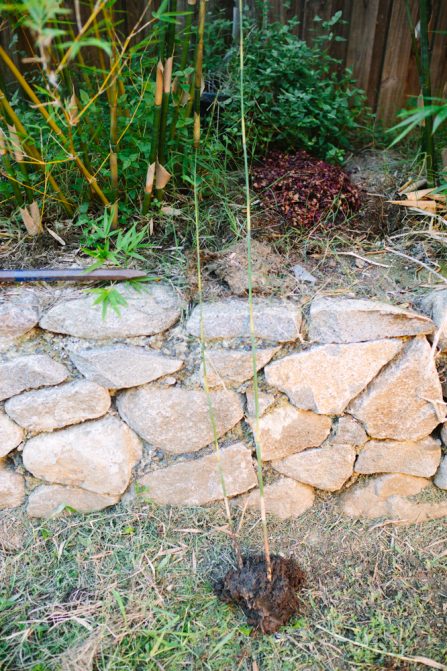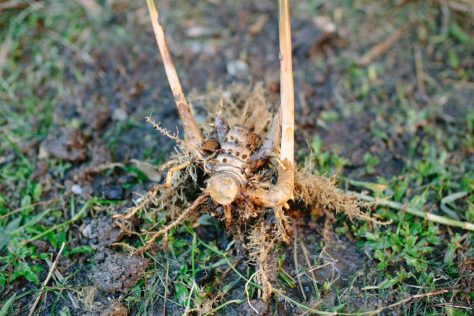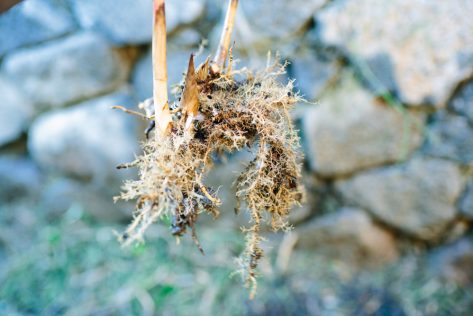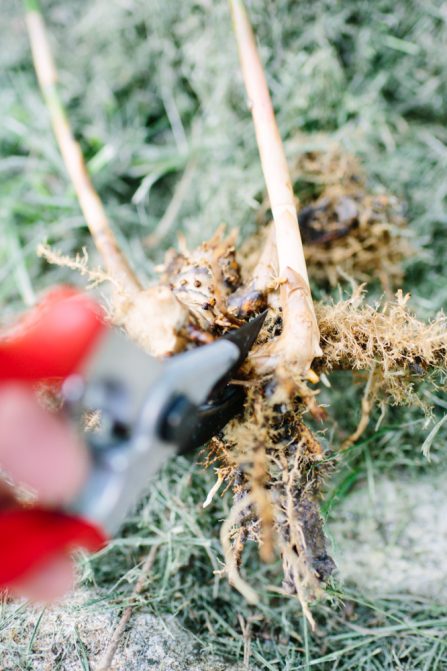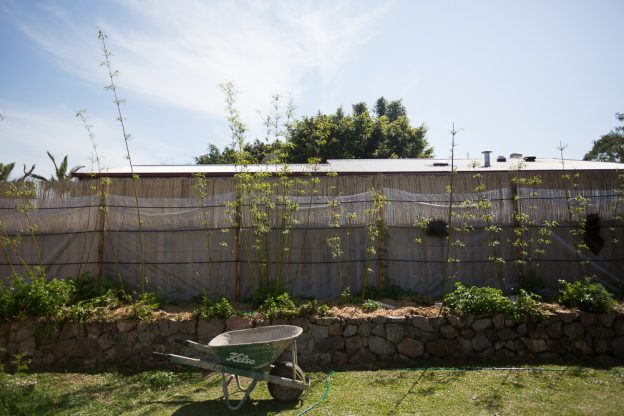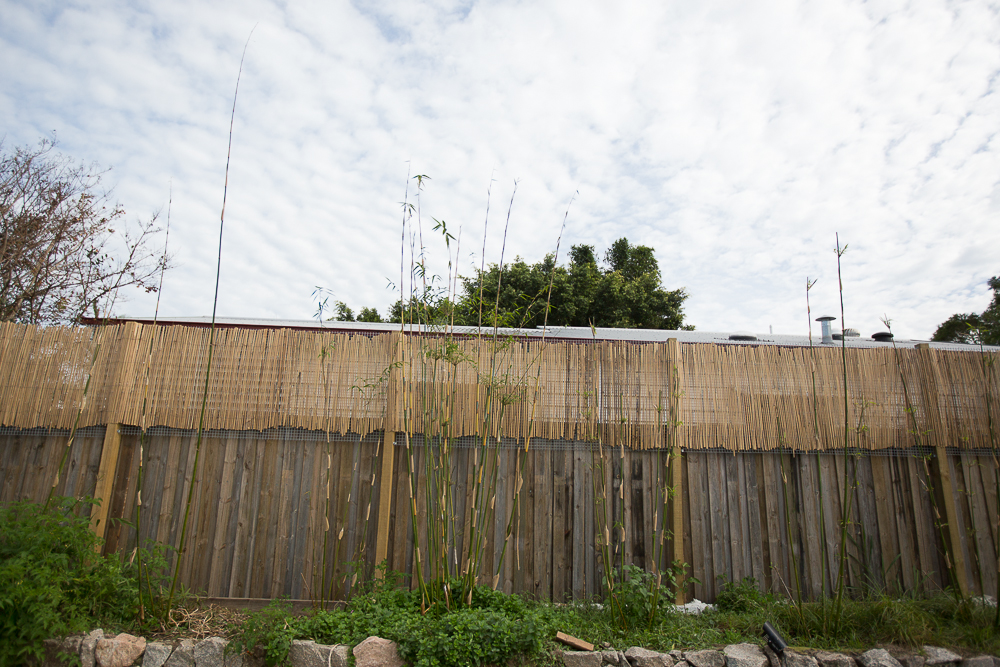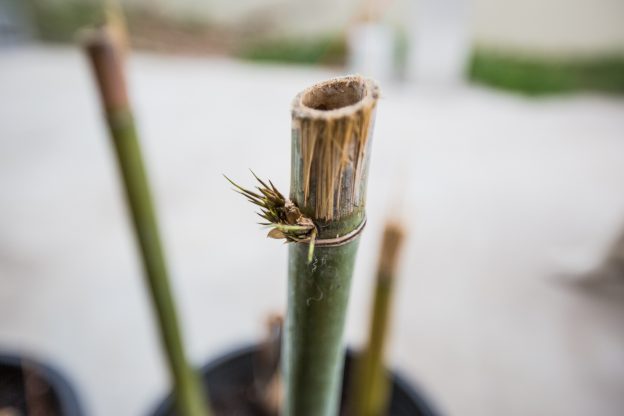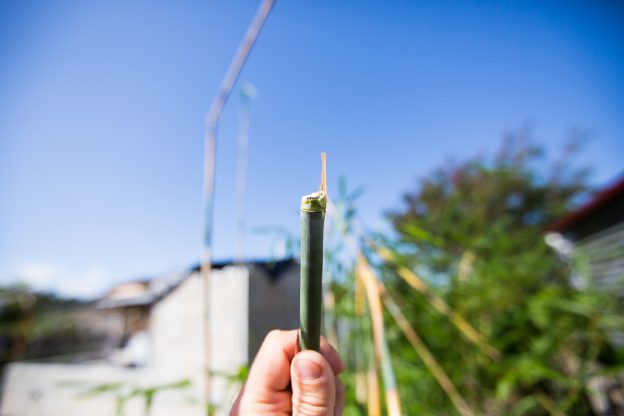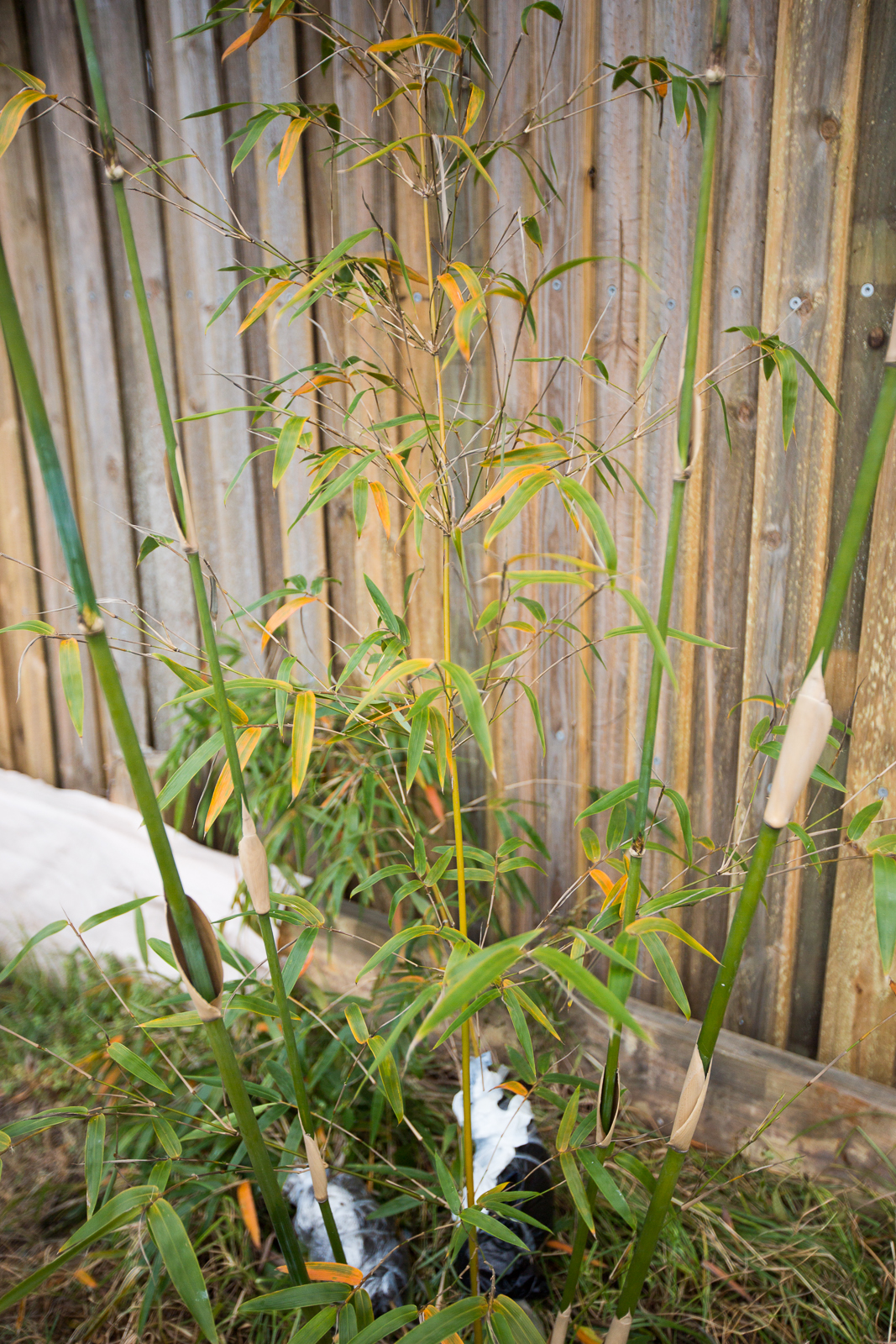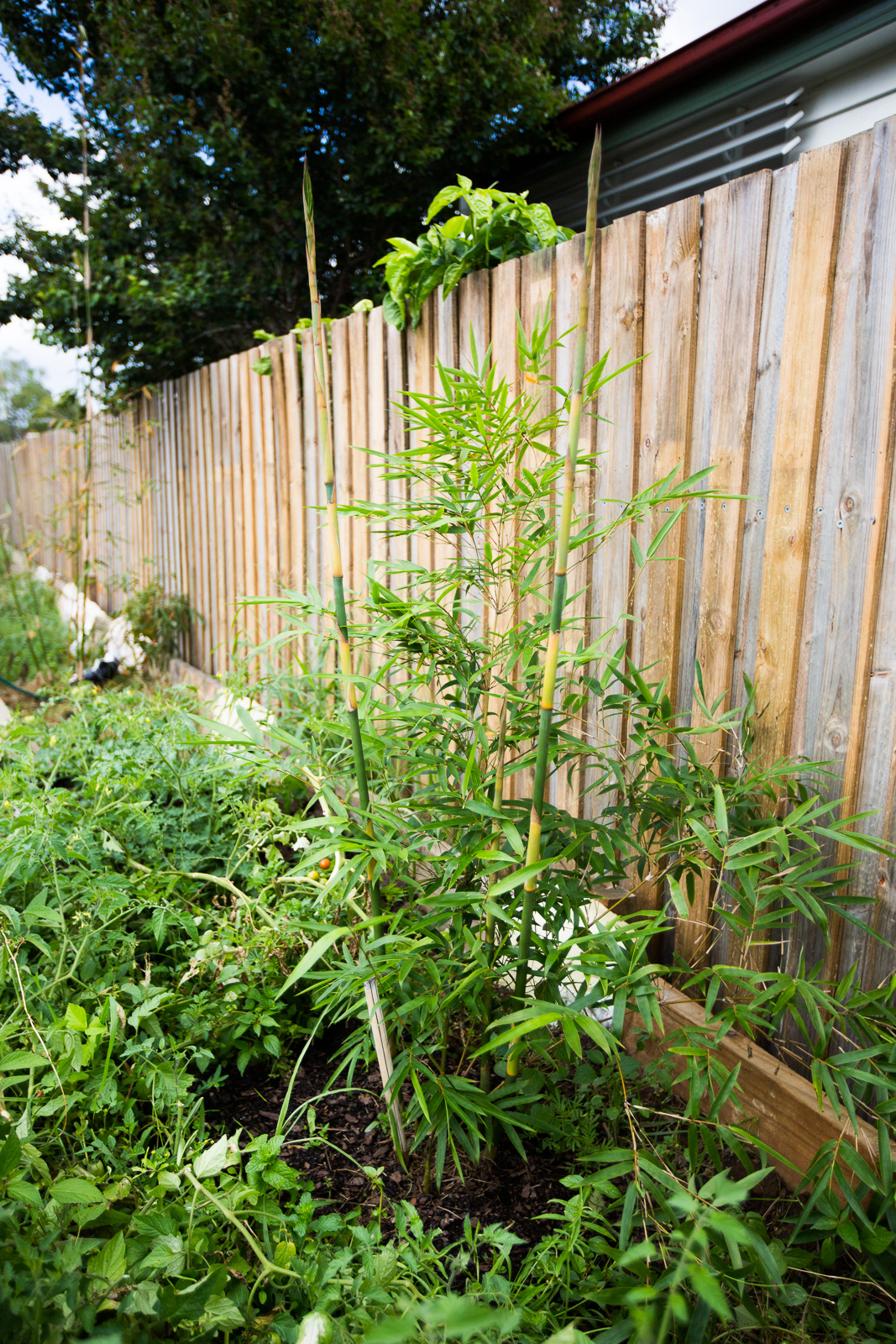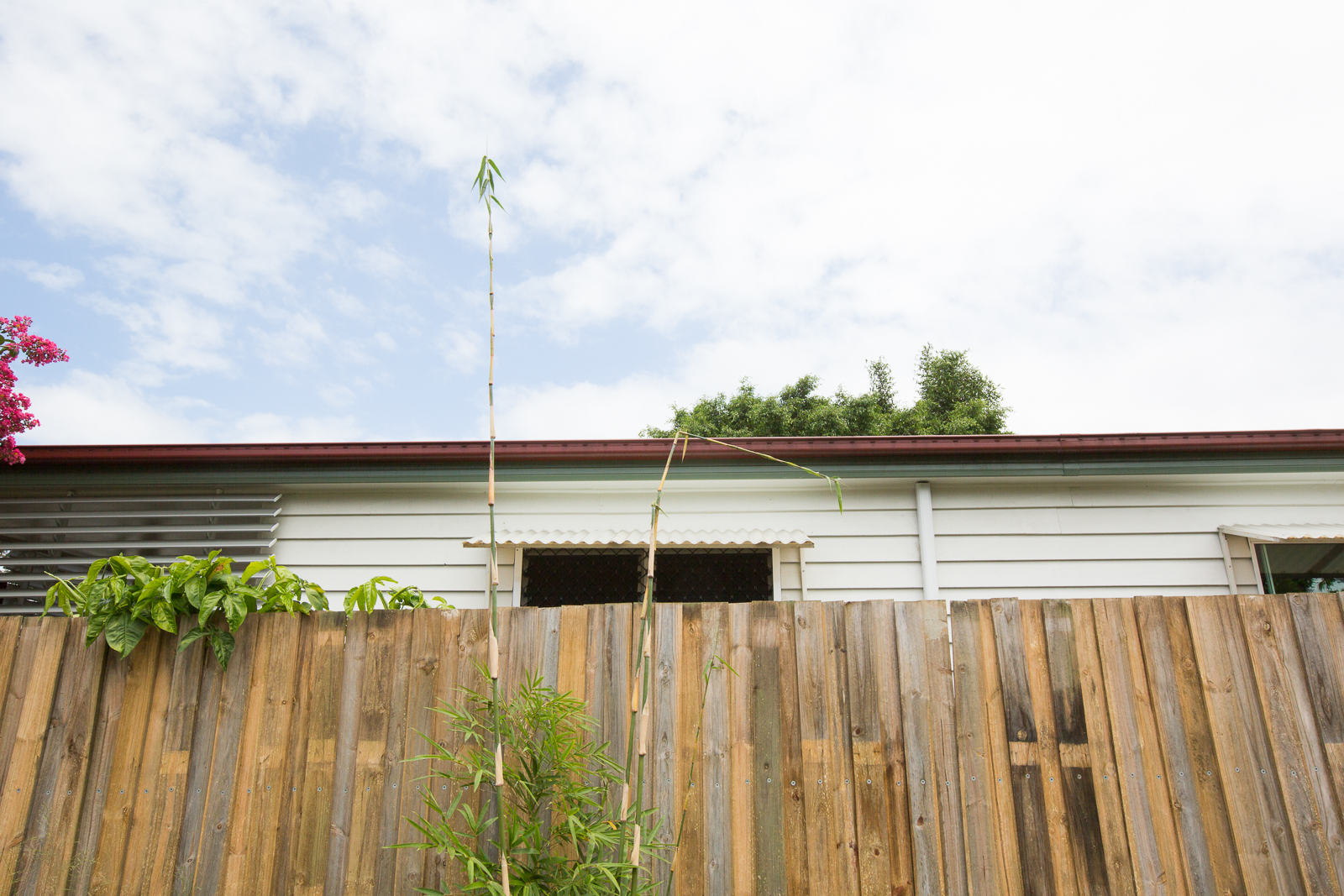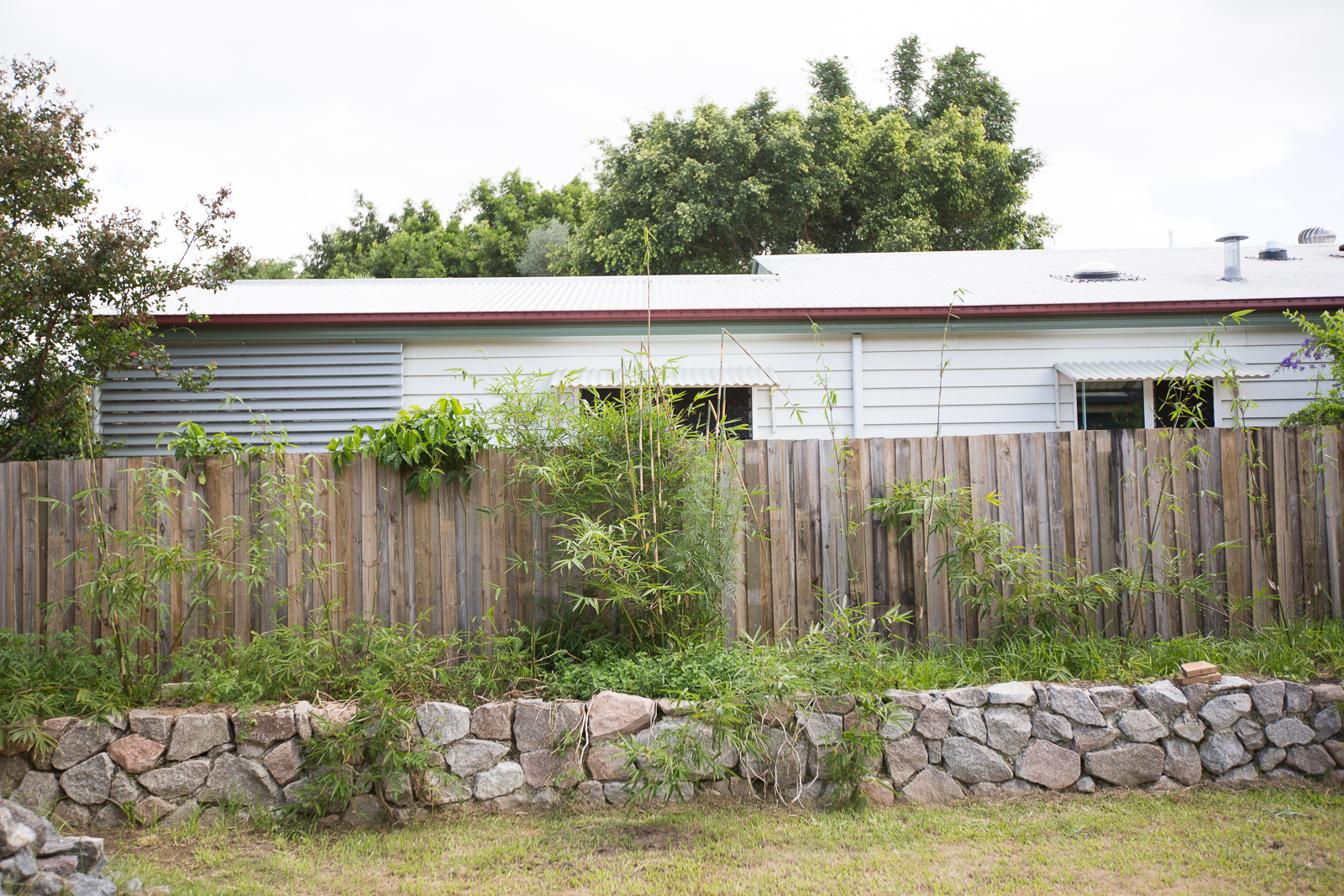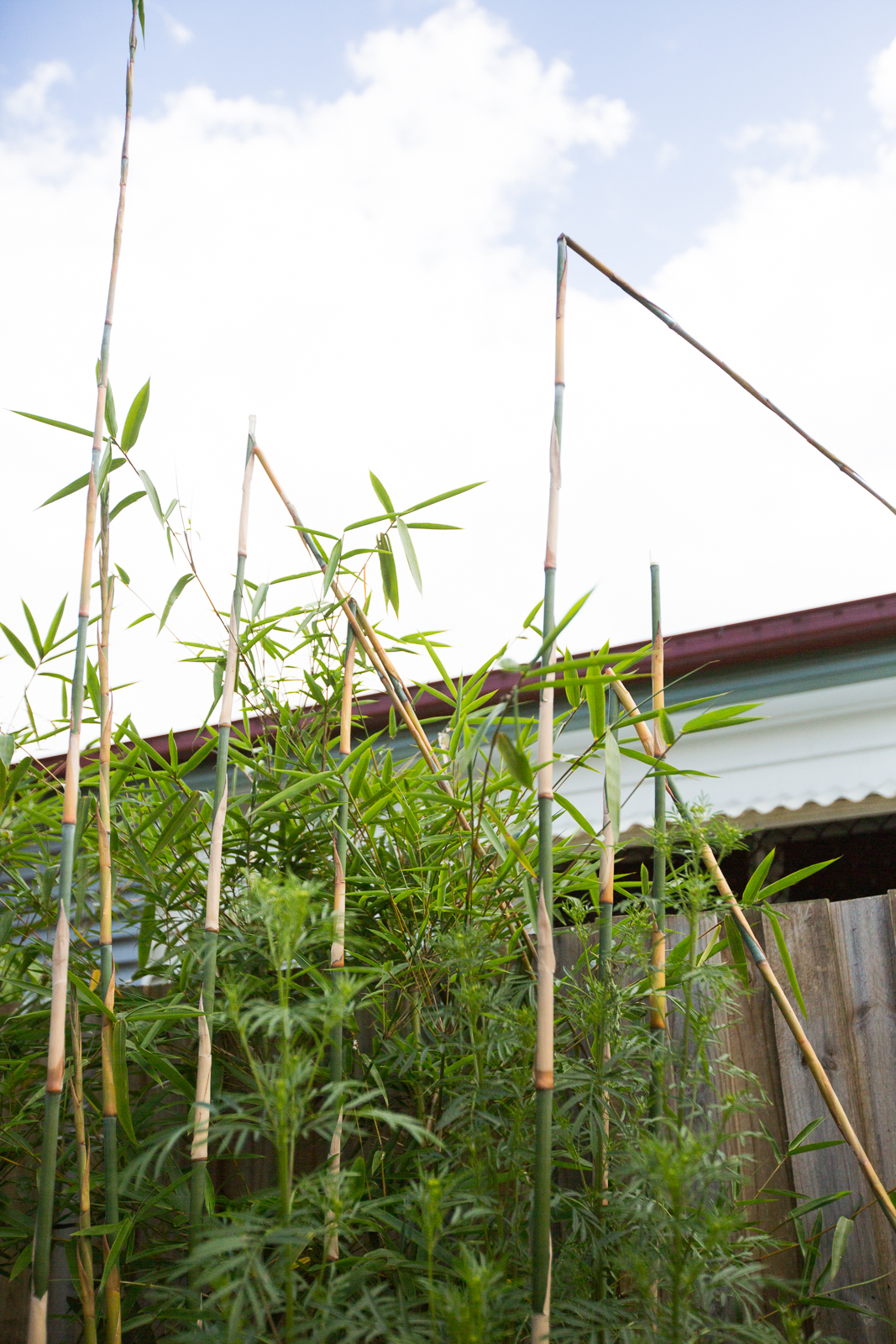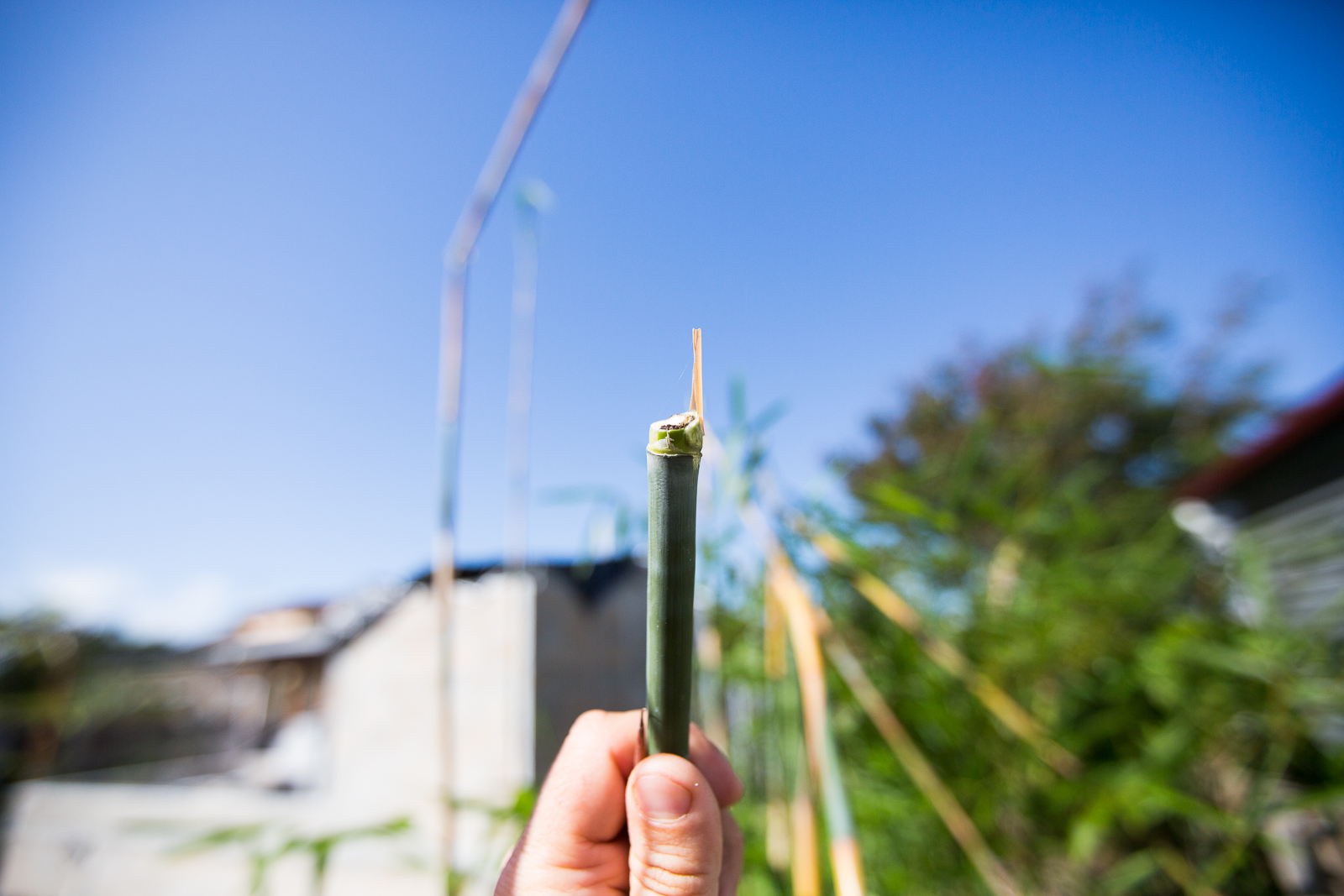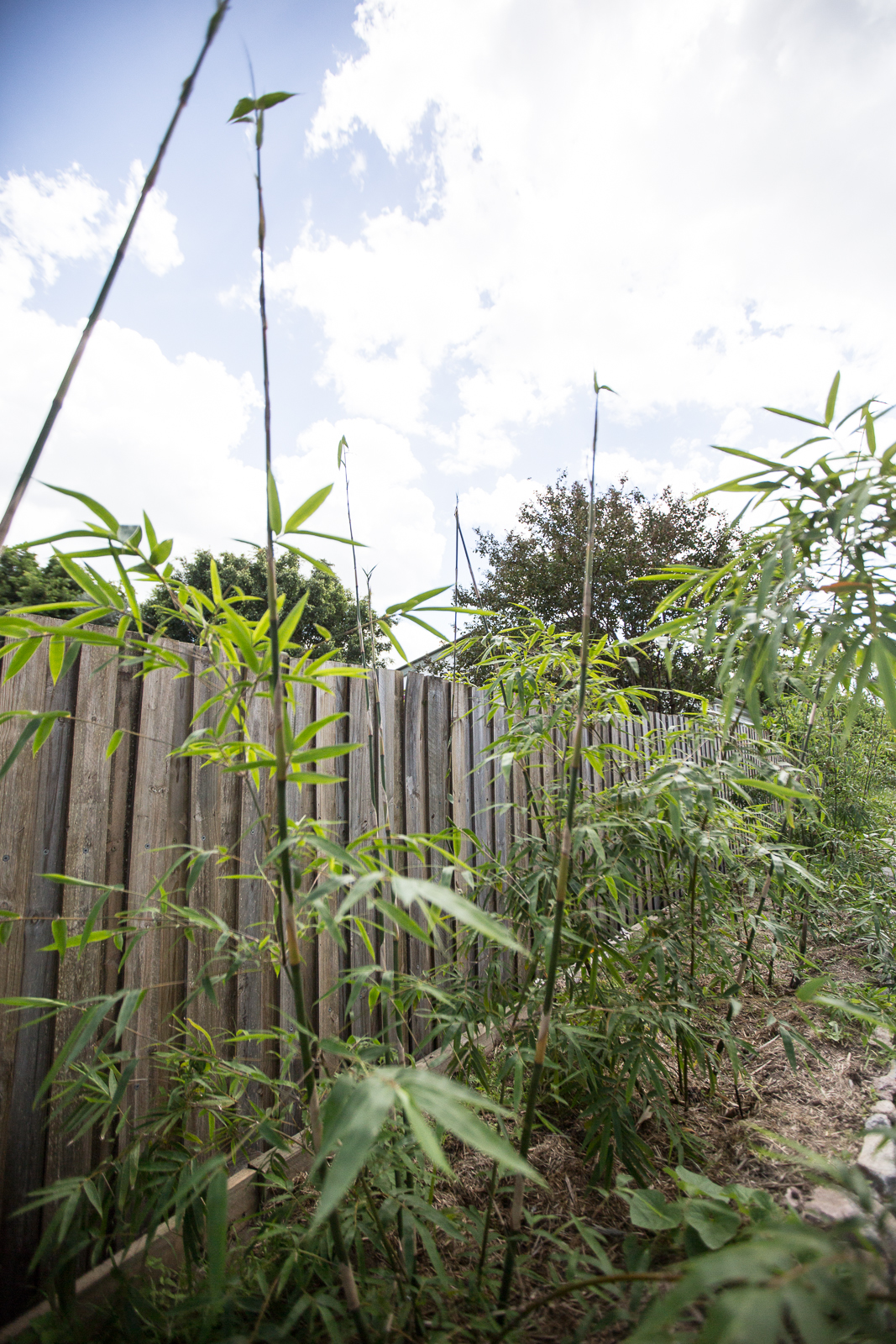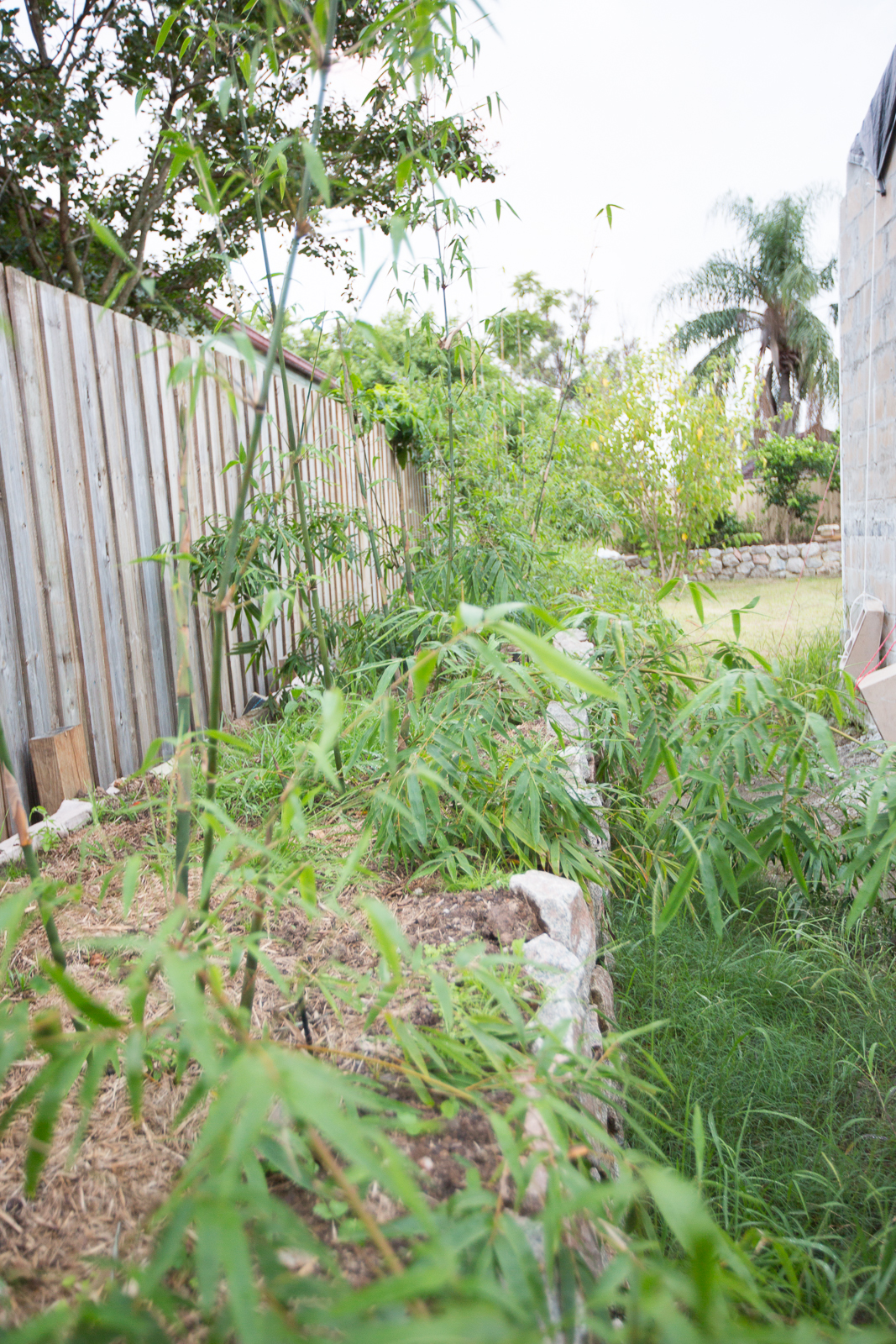NOTE: If you are after the bamboo and shitty neighbours story, you can read everything about it on the ‘dear neighbour’ website.
How to successfully propagate Gracilis Bamboo from cuttings you ask me?
Well, it’s been a long and winding road, full of potholes of despair… but after more than 4 years, I can finally say I have learnt how to successfully propagate Gracilis Bamboo from cuttings.
Here is the proof – this is a cutting that I successfully managed to root at the end of 2014, early 2015. See the roots coming out of the bud?
I have since managed to successfully propagate 8 out of 8 cuttings this year. Once you know the trick, it is quite easy to grow your own cuttings of Bambusa Textilis Gracilis.
The two diagrams below show in detail 1) When to take a Gracilis cutting and 2) How to plant the Gracilis cutting.

- Make sure you take a cutting from a mature culm, one that is over 12 months old.
- The culm diameter is important in the sense that it will hold water to feed the new cutting while it attempts to grow roots to survive. Use a culm where the inner diameter (the hollow part of the tube) is greater than say 7mm, so it can hold plenty of water.
- Take the cutting 3 to 4 inches above and below the culm node.
- Make sure there is one main branch coming out of the node and the size of the “bud” is large and looks healthy as this is the point where the roots will grow from.
- Take the cutting around the full moon phase. The moon affects the earth in many ways. In Bamboo, the moon’s gravitational pull draws sugars and starches from the roots and rhyzomes up the culm to help new leaf growth. These nutrients provide energy for the generation of leaves and fresh branches at the node of the cutting.
- Remove all small branches and leaves from the node – but leave the main nodal branch as this will be the cutting”s lifeline once it grows leaves.
- Plant the culm in a large pot with potting mix (large pot is good to avoid disturbing young plants during transfer).
- Use root hormone on the bud.
- Place the culm almost parallel to the ground (approximately 20 to 30 degrees to the ground) and ensure the main branch sticks up out of the soil, but the bud is well placed under the soil.
- Place the pot in a shady spot. I placed some pots at the base of the parent plant so its “new” environment hadn’t been changed.
- Water the pot on a daily basis for 4 weeks.
- Make sure the inside of the culm is full of water at all times.
- This process should completed during the warmer months to give your bamboo the best chance of growth.
- All that bamboo wants to do is survive and grow, this will best be achieved when there is high humidity and warmer temperatures.
One of the keywords that constantly keeps popping up in my statistics is “Gracilis Growth Rate”.
I would also like to crush any and all myths about this and set some facts straight.
- When planted from a cutting, Gracilis will do pretty much nothing the first 12 months. It will be sorry looking stick in the ground growing roots and a few small branches and leaves.
- The following 12 months, it will send some new small culms up – these will be the diameter of a pencil (maybe even smaller). The culms will grow to a height of approximately 2 metre or so and still look a bit sorry.
- After the first 24 months, things become interesting, and gracilis now throws some culms up to approximately 3 metres in height – but this depends on factors such as the size of the container, how much fertiliser/nutrients have been provided and how much water has been provided.
- Now you have a thick and dense Gracilis grove… the next year, you will see new culms that may reach the maximum height. The lower half of the plant will start to defoliate as the upper half grows most, if not all of the leaves.
- Gracilis is great for “all-round” privacy the first couple of years, but once it has matured, leaves only appear on the upper half of the culms. So it is great to block out a two storey window, but not ground levels. That is why I am planting some Malay dwarf bamboo in conjunction with my Gracilis… So if you want ground floor privacy from your dear neighbour, I would suggest looking at a different type of bamboo.
Anywho, that’s all from me for now, follow these guidelines, good luck and let me know how you went!
I look forward to hearing from you :)
Henry Gomez aka Papa Gomez.



